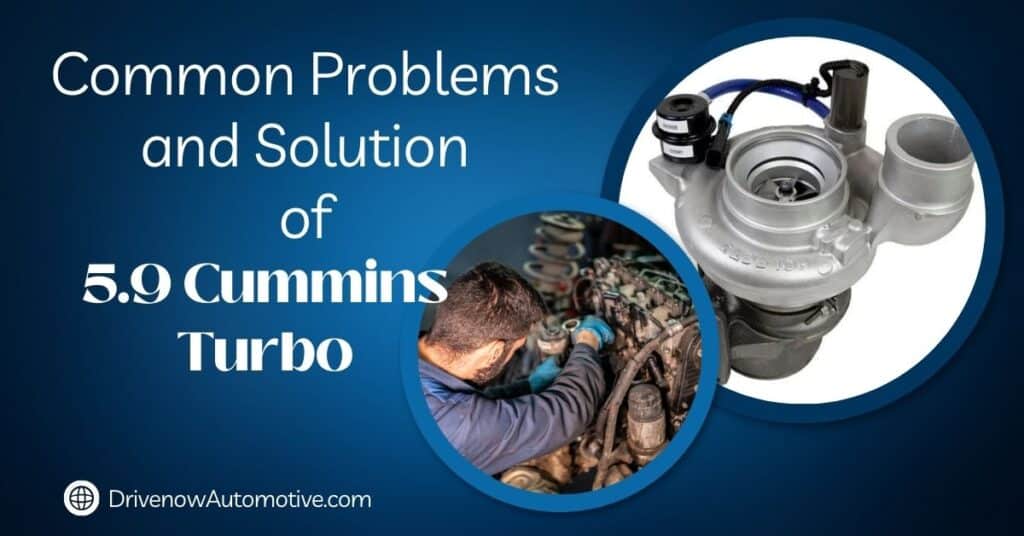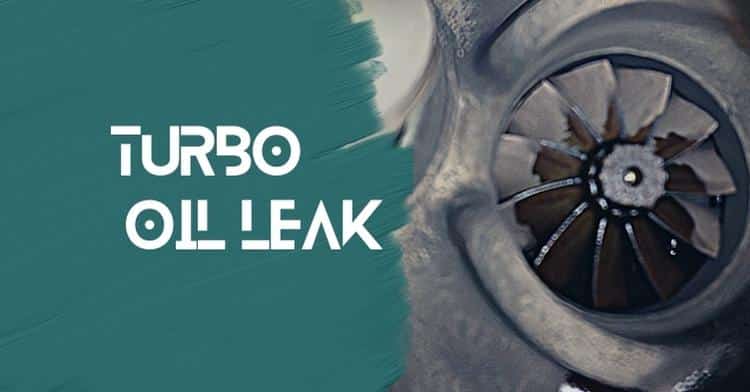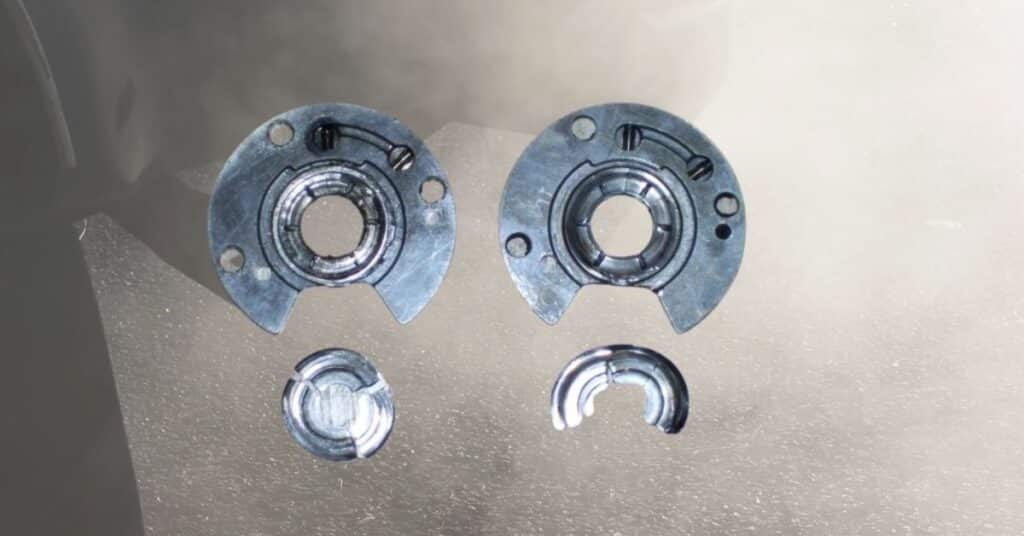If you’re a fan of raw power and fuel efficiency, then the 5.9 Cummins engine with its trusty turbocharger is probably already on your radar. This iconic duo delivers a boost of power that’s sure to make any driver feel like they’re in the driver’s seat of a high-performance machine. But like any superhero, even the mighty Cummins engine and its trusty turbocharger can suffer from wear and tear over time. This can lead to pesky problems that could hinder your engine’s performance and reliability, which is why we’re here to discuss some common issues encountered with the stock turbo on a 5.9L Cummins. From oil seal failure to bearing wear, we’ll cover everything you need to know to keep your Cummins engine purring like a lion. So buckle up, and let’s dive into the world of Cummins engines!

Oil Seal Failure
One of the most common problems with the 5.9L Cummins turbocharger is oil seal failure. Over time, the oil seals in the center hub rotating assembly can wear out, causing oil to leak into the intake and exhaust systems.
The impact of oil in these systems is severe since it can cause a decline in engine performance and even damage other engine components, such as the intercooler. For instance, oil in the intake system could cause the engine to consume oil at a faster pace, resulting in a decrease in efficiency and increased oil consumption. In extreme cases, oil in the exhaust system could lead to the failure of the catalytic converter, which could result in harmful emissions being released.

One of the main issues with detecting oil in the intake system is that it can often go unnoticed until it has already caused significant damage. This becomes especially problematic when the engine is under a heavy load since increased pressure can cause more oil to leak into the intake system. Ongoing turbo wear can cause a drop in engine performance, leading to a loss of horsepower and decreased efficiency over time.
In addition to the performance issues, oil in the intake system can also lead to carbon buildup, engine damage, and excessive smoke and oil consumption. As such, it is crucial to address this issue promptly before it causes further damage to the engine. One way to detect oil in the intake system is to inspect the turbocharger for any signs of oil leakage and check the air filter for excessive oil buildup.
Bearing Wear
Another common problem encountered with the 5.9L Cummins turbocharger is bearing wear. The bearings in the turbocharger can wear out due to age, high mileage, excessive heat, lack of lubrication, or a clogged oil feed line. When the bearings wear out excessively, the compressor fan may contact the sides of the compressor housing, causing damage to the blades and other engine components. If the bearings become excessively worn, the 5.9 Cummins turbocharger may need to be replaced entirely, which can be expensive.

Bearing wear can cause the turbocharger to spin less efficiently, resulting in a loss of power and decreased fuel efficiency.
Warning signs of bearing wear can include a whining noise from the turbo, increased engine oil consumption, and increased fuel usage. If left untreated, bearing wear can lead to more severe damage, potentially leading to engine failure.
Additionally, metal shavings and compressor blade pieces can enter the engine, causing severe engine damage. Therefore, it is important to detect and address bearing wear early on to prevent further engine damage. Some signs of bearing wear include excessive noise from the turbocharger and reduced boost pressure.
Prevention and Maintenance
Regular inspection and replacement of oil seals and bearings can help prevent oil seal failure and bearing wear. It is also important to keep the oil feed line clear and free from debris to prevent clogs that can lead to bearing wear. Aftermarket upgrades or replacements, such as high-performance bearings and upgraded oil lines, can also help prevent these issues.
Proper maintenance and care of the turbocharger, such as regular oil changes and inspections, can also help prolong its lifespan and prevent problems. Regular maintenance can also help detect and address any issues before they cause further damage to the engine.
How to Inspect 5.9l Cummins Turbocharger for Optimal Performance
Upgrading your 5.9 Cummins turbocharger can significantly boost performance, but before doing so, it’s crucial to ensure that your vehicle is in top mechanical shape. If you own a 2003-2007 5.9-liter truck with a tune on it, paying attention to the stock turbocharger’s condition is especially critical.
In this section, we’ll discuss how to inspect your 2003-2007 dodge ram 2500/3500 turbocharger for optimal performance and to prevent potential issues.
Inspecting the Intake for Clean, Fresh Air
The first step is to check the turbocharger’s intake for clean, fresh air. Make sure that the air filter lid is tight, and check the hoses to ensure that they are not damaged or burned. Even if you have an aftermarket intake with filter minders, it’s still essential to guarantee that the turbocharger gets clean, fresh air for optimal functioning.
Inspecting the Compressor Wheel for Damage
Next, inspect the compressor wheel inside the turbocharger. It should spin freely with a little play without oil. If it feels like it has scraped the inside of the compressor cover or the blades are buffed off the edge of the compressor cover, that is a sign of damage. Also, check the blades on the compressor wheel. They should be sharp-looking and go all the way to the edge of the compressor cover. Rounded blades can cause efficiency loss and power loss.
Checking the Hose for Leaks
Check the hose that goes from the compressor cover to the wastegate for burns, damage, tears, or leaks. If it appears to be in good condition, leave it alone. However, if it is damaged, replace it immediately.
Testing for Boost Leaks
After inspecting the compressor wheel:
- Create an apparatus to check for boost leaks. You can use a PVC end cap or a boost tester apparatus.
- Put it on the face of the compressor cover and air it up to about 10 psi. If you hear a hiss, you have a boost leak.
- Find the leak, which can be caused by loose or torn intercooler boots, lost intake gaskets, or a broken grid heater.
- Fix the boost leak and ensure that the system can hold air and leak down through the rings only in the motor.
Examining the Exhaust Manifold
Finally, check the exhaust manifold for any excessive black soot and examine the gaskets as they connect the manifold to the head. If you notice any black soot or wisps of black smoke, you may have a problem with the gaskets or the exhaust manifold.
Before upgrading your truck’s performance by installing a new turbocharger, ensure that your stock turbocharger is in good condition. By following these simple steps, you can determine if you need to replace it or address any other issues. Checking for boost leaks, ensuring that your air filter is clean, and examining the compressor wheel and exhaust manifold can greatly improve your vehicle’s performance. Remember, inspecting your current turbocharger thoroughly can help prevent potential issues and ensure that your truck is in optimal mechanical shape.
Symptoms Of Bad Turbo 5.9 Cummins
Several signs can indicate turbo failure in 5.9 cummins, including:
Excessive smoke:
If you notice thick, black smoke coming from the exhaust pipe, it could indicate that the turbocharger is not functioning properly. This is because the turbocharger may be allowing too much oil to enter the combustion chamber, which can result in incomplete fuel burning and increased emissions. Additionally, excessive smoke and a bluish tailpipe can indicate that the turbocharger’s seals are worn, allowing oil to leak into the exhaust system, resulting in excessive smoke. If you notice any unusual smoke from your vehicle’s exhaust, it is important to have it inspected by a qualified mechanic to diagnose and fix the issue.
Lack of power:
The turbo is responsible for increasing the amount of air that the engine receives, which in turn allows it to burn more fuel and produce more power. If the turbo is not functioning properly, a reduced amount of air will enter the engine, leading to a decrease in power output. This can manifest as sluggish acceleration or a general feeling of weakness when driving.
Rough idle:
A failing 5.9 Cummins turbo can cause rough idle, which means the engine is not running smoothly when the vehicle is at a stop or idling. This roughness can be caused by several factors, including a damaged or worn turbocharger, faulty injectors, or issues with the fuel system. When the turbocharger is not functioning properly, it can cause the engine to run poorly, resulting in a rough idle. It is essential to have the turbo inspected and repaired or replaced promptly to prevent further damage to the engine.
Boost pressure issues:
If you notice that the boost pressure is lower than normal, it could be due to a failing turbocharger. If the turbocharger is not functioning properly, it may not be able to provide the necessary boost pressure to the engine, resulting in a decrease in power output and reduced efficiency.
There are several reasons for boost pressure issues, such as a clogged air filter, a damaged or worn turbocharger, or a malfunctioning wastegate. Boost pressure issues can also be caused by leaks in the intake or exhaust systems, resulting in pressure loss.
Oil leaks:
Over time, the seals and gaskets in the turbocharger can deteriorate, causing oil to leak out of the unit. This can lead to a decrease in engine performance and reliability and potential damage to other engine components.
Oil leaks can also create a safety hazard, as oil can be flammable and can pose a risk of fire if it comes into contact with hot engine components. Therefore, it is important to inspect the turbocharger regularly for signs of oil leakage and address any issues promptly.
Common signs of oil leaks from the turbocharger include:
- Oil spots or drip on the ground beneath the engine.
- Oil on the exterior of the turbocharger.
- Low engine oil levels.
If any of these signs are present, it is recommended to inspect the turbocharger for leaks and replace any faulty seals or gaskets as needed. Regular maintenance and inspection of the turbocharger can prevent oil leaks and ensure the continued reliability and performance of the engine.
A whining noise coming from the turbo:
A whining noise from the turbo can be a sign of several issues, including worn-out bearings or damaged blades. As the turbo spins, it generates high pressure and heat, causing components to wear out over time. If the bearings become worn out, the turbo may produce a whining noise as the components rub against each other. This noise can also be caused by a damaged compressor wheel or turbine blade, which can cause the turbo to spin less efficiently and lose power. If you notice a whining noise coming from your turbo, it is important to have it inspected and repaired as soon as possible to prevent further damage to your engine.
Increased engine oil consumption and fuel usage:
When the turbocharger is not working properly, it can cause the engine to consume more oil and fuel than usual. This is because the turbocharger is not providing the necessary boost to the engine, causing it to work harder and use more fuel to compensate for the lack of power.
A malfunctioning turbocharger can cause oil to leak into the combustion chamber, resulting in increased oil consumption and smoke coming from the exhaust. If you notice these signs, it is important to address the issue as soon as possible to avoid further damage to the engine.
If any of these signs are present, it is essential to take action to address the problem. Ignoring the warning signs of turbo failure can lead to further damage to the engine, potentially leading to complete engine failure.
Conclusion
In conclusion, the 5.9L Cummins turbo engine is a reliable and powerful choice for diesel-powered vehicles. However, it is susceptible to problems such as oil seal failure, bearing wear, and turbo failure. It is essential to identify and address these problems on time to prevent further damage to the engine.
If you suspect that your 5.9L Cummins engine is experiencing turbo problems, replacing the entire turbo and using an automotive borescope to check for oil leakage is recommended. Regular maintenance, such as changing the engine oil and air filters, can also help prevent these issues.
Last Updated on October 23, 2025 by Rifen
